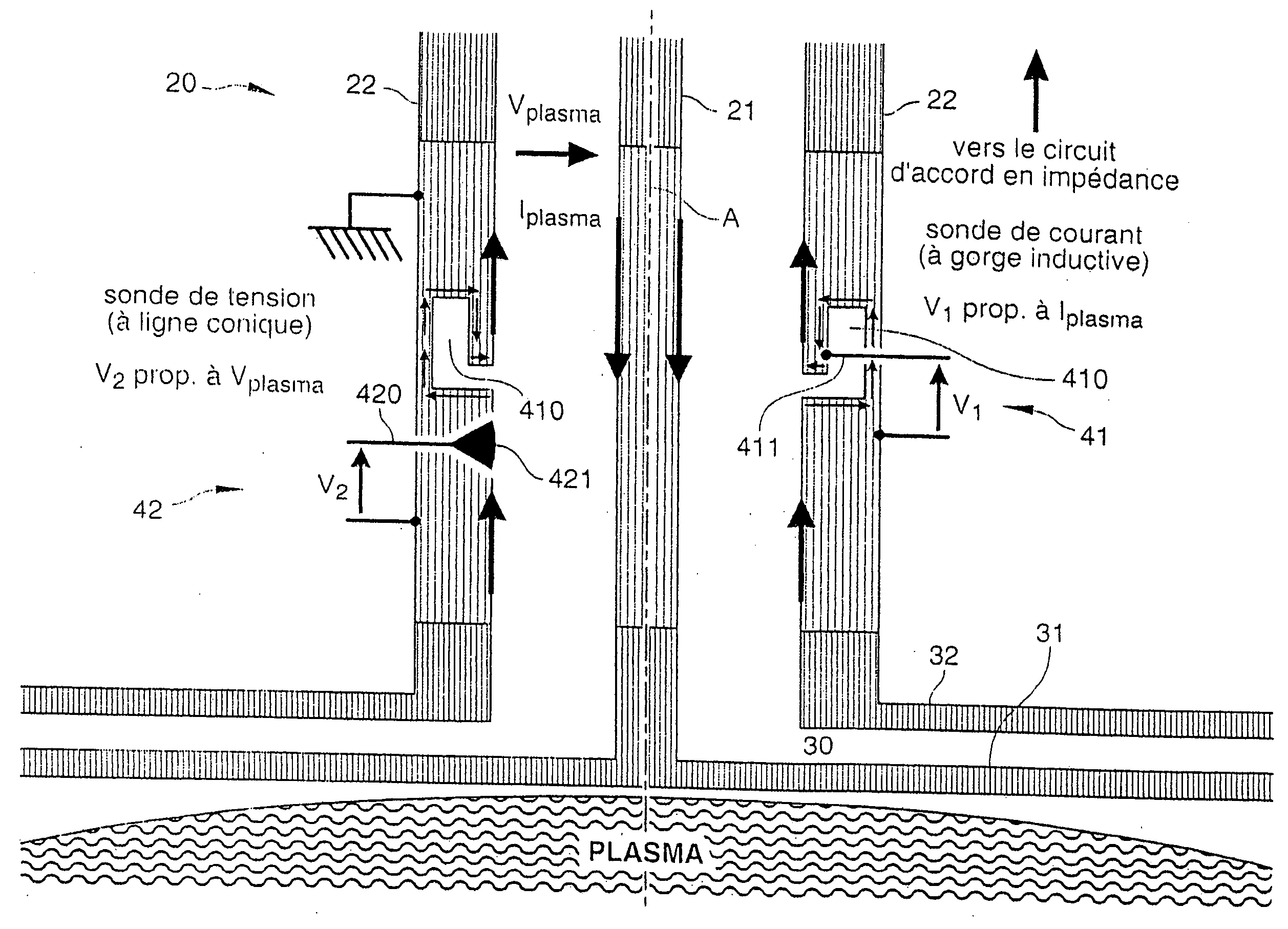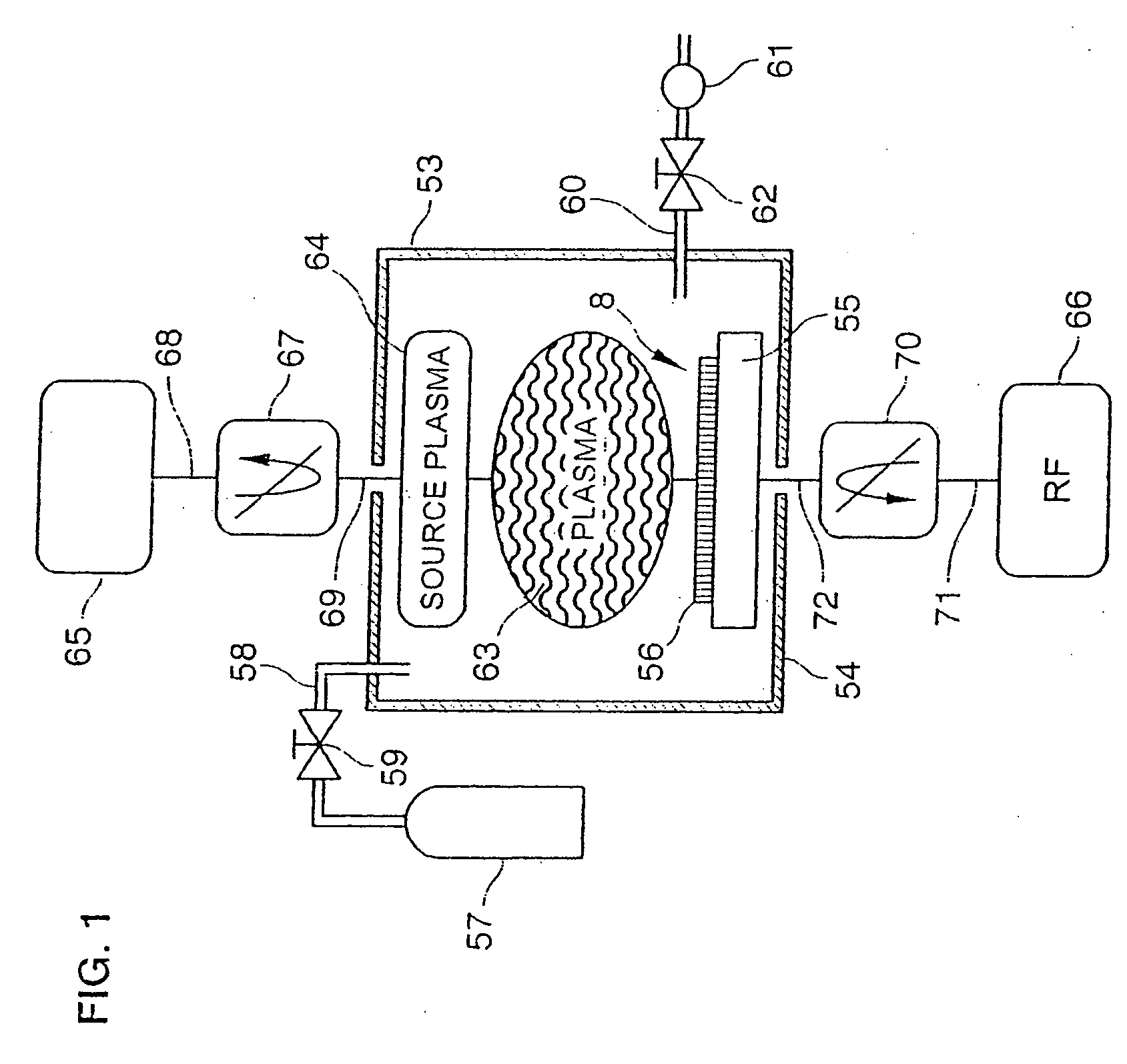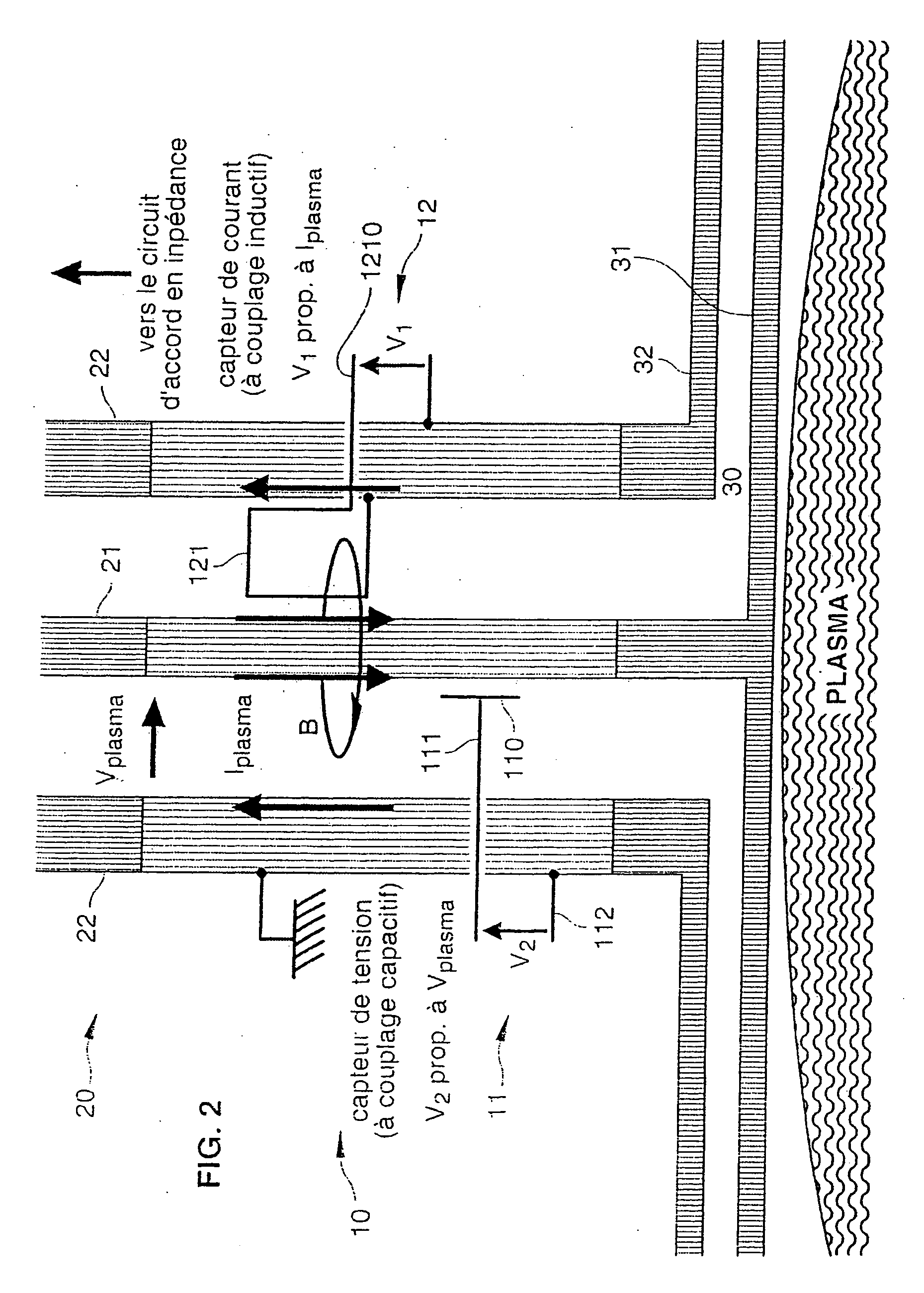Probe for Measuring Characteristics of an Excitation Current of a Plasma, and Associated Plasma Reactor
a technology of excitation current and probe, which is applied in the field of probe for measuring characteristics of excitation current of plasma, and associated plasma reactor, can solve the problems of large error in phase offset measurement between current and voltage, and the inability of most existing probes designed to work at 13.56 mhz to be used at vhf,
- Summary
- Abstract
- Description
- Claims
- Application Information
AI Technical Summary
Benefits of technology
Problems solved by technology
Method used
Image
Examples
Embodiment Construction
[0125]FIG. 3 schematically represents a probe according to one embodiment of the invention.
[0126] The probe is mounted between an RF electrode and an impedance matching circuit connected to an RF generator (not shown).
[0127] As has been described above, an impedance matching circuit can be used in plasma processes in particular in order to optimize the transfer to the plasma of the power delivered by the RF generator.
[0128] Note that the elements already mentioned in relation to the known probe shown in FIG. 2 will be referenced in the same way with reference to FIG. 3 (without being newly introduced).
[0129] This figure thus includes:
[0130] a conducting coaxial transmission line 20 which includes an inner conductor 21 and an outer conductor 22, and
[0131] an RF electrode 31 in form of disk, and an associated lid 32.
[0132] Note however that the probe according to the invention can be mounted differently, as described further below.
[0133] There is also a current sensor (here 41...
PUM
 Login to View More
Login to View More Abstract
Description
Claims
Application Information
 Login to View More
Login to View More - R&D
- Intellectual Property
- Life Sciences
- Materials
- Tech Scout
- Unparalleled Data Quality
- Higher Quality Content
- 60% Fewer Hallucinations
Browse by: Latest US Patents, China's latest patents, Technical Efficacy Thesaurus, Application Domain, Technology Topic, Popular Technical Reports.
© 2025 PatSnap. All rights reserved.Legal|Privacy policy|Modern Slavery Act Transparency Statement|Sitemap|About US| Contact US: help@patsnap.com



